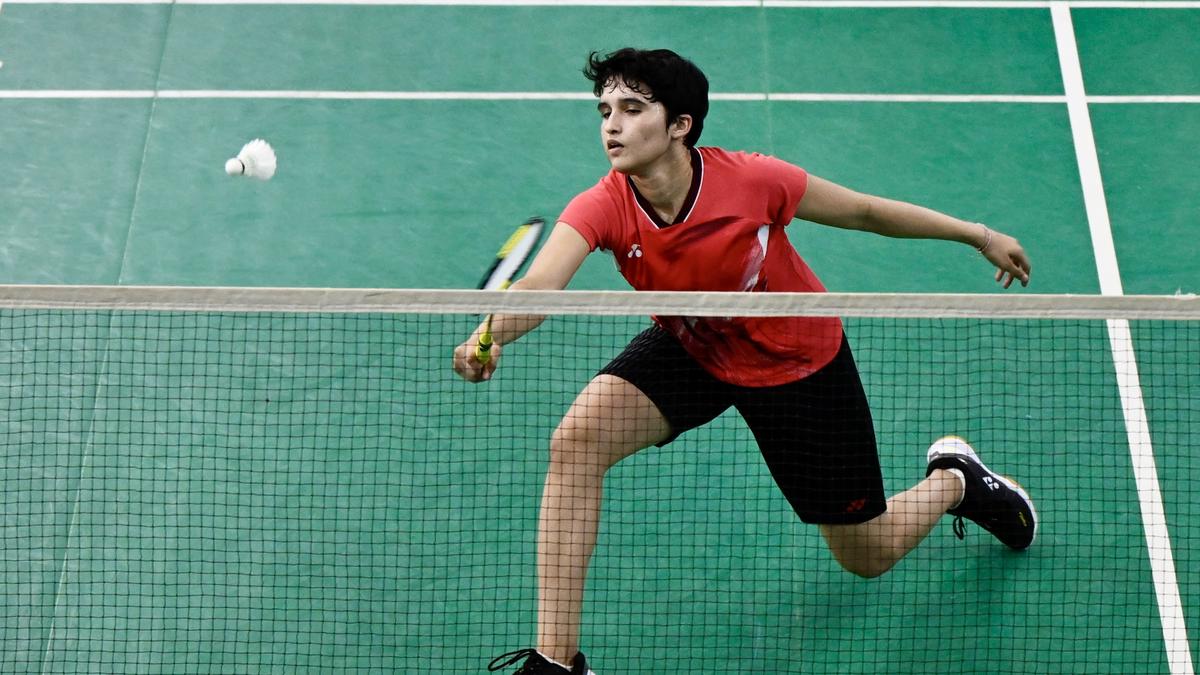Indian rising star Unnati Hooda’s journey at the China Open Super 1000 came to an end in the quarterfinals as she faced a tough defeat against Japan’s Akane Yamaguchi in Changzhou. The third-seeded Yamaguchi, a formidable two-time world champion, showcased her prowess on the court by defeating the 17-year-old Hooda in straight games with a scoreline of 21-16, 21-12 in a match that lasted 33 minutes.
Reflecting on her performance, Hooda acknowledged the challenges she faced during the game, stating, “I was making so many unforced errors at times when the scores were equal. She (Yamaguchi) was very good with her drop shots and controlled the game.” The young Indian player also highlighted the importance of patience in facing formidable opponents like Yamaguchi, emphasizing the need to wait for the right moment to launch attacks rather than rushing to finish points.
Despite the loss, the tournament marked a significant milestone for Hooda, currently ranked World No. 35, as she managed to secure notable victories earlier in the competition. In the opening round, she triumphed over World No. 29 Kirsty Gilmour of Scotland in straight games. However, her most remarkable feat came in the round of 16, where she outlasted her compatriot and two-time Olympic medallist, P. V. Sindhu, in a thrilling three-game battle.
Expressing her satisfaction with her performance in the tournament, Hooda stated, “I am happy that I reached the quarterfinals in my first Super 1000 event but lots to learn from this tournament.” The experience gained from competing against world-class opponents like Yamaguchi will undoubtedly serve as a valuable learning opportunity for the young Indian shuttler as she continues to progress in her badminton career.
In a separate event, India’s top-ranked men’s doubles pair, Satwiksairaj Rankireddy and Chirag Shetty, are set to face the Malaysian duo of Ong Yew Sin and Teo Ee Yi in the quarterfinals later in the day. The Indian duo, known for their remarkable chemistry on the court, will look to secure a victory and advance further in the prestigious tournament.
As Indian badminton continues to make its mark on the international stage, promising talents like Unnati Hooda and established pairs like Rankireddy and Shetty are showcasing their skills and determination to compete against the best in the world. The China Open Super 1000 serves as a platform for these athletes to test their abilities, learn from their experiences, and strive for excellence in the sport of badminton.
Unnati Hooda’s Rise in Indian Badminton
Unnati Hooda’s journey at the China Open Super 1000 may have ended in the quarterfinals, but her performance throughout the tournament has established her as a rising star in Indian badminton. At just 17 years old, Hooda’s tenacity and skill on the court have caught the attention of fans and critics alike, showcasing her potential to become a formidable force in the sport.
Facing off against the likes of Akane Yamaguchi, a seasoned two-time world champion, Hooda displayed glimpses of her talent and determination. While the defeat in the quarterfinals was a tough pill to swallow, it was a valuable learning experience for the young shuttler. The ability to compete against top-ranked players like Yamaguchi will undoubtedly contribute to Hooda’s growth and development as a player.
In her victory over World No. 29 Kirsty Gilmour and the thrilling battle against P. V. Sindhu, Hooda demonstrated her ability to hold her own against established opponents. These wins not only reflect her skill but also her mental fortitude and competitive spirit. Hooda’s journey in the China Open Super 1000 has not only showcased her talent but also her potential to achieve great success in the world of badminton.
Satwiksairaj Rankireddy and Chirag Shetty’s Doubles Dominance
While Unnati Hooda’s singles journey captivated fans, India’s men’s doubles pair Satwiksairaj Rankireddy and Chirag Shetty have been making waves in their own right. Known for their exceptional chemistry on the court, Rankireddy and Shetty have proven to be a formidable duo in the world of badminton.
Facing off against the Malaysian pair of Ong Yew Sin and Teo Ee Yi in the quarterfinals, Rankireddy and Shetty will look to continue their impressive run in the China Open Super 1000. With their combination of power, precision, and strategic play, the Indian duo poses a significant challenge to their opponents and remains a strong contender in the tournament.
As India’s top-ranked men’s doubles pair, Rankireddy and Shetty have consistently delivered strong performances on the international stage, earning accolades and recognition for their skill and teamwork. Their participation in prestigious tournaments like the China Open Super 1000 not only showcases their talent but also highlights India’s growing presence in the world of badminton doubles.
Conclusion
The China Open Super 1000 has been a stage for Indian badminton talents to shine and compete against some of the best players in the world. Unnati Hooda’s remarkable journey and Satwiksairaj Rankireddy and Chirag Shetty’s doubles dominance exemplify the depth of talent and potential within Indian badminton.
As these athletes continue to hone their skills, gain invaluable experience, and strive for excellence, the future of Indian badminton looks bright. With promising talents like Hooda and established pairs like Rankireddy and Shetty leading the charge, Indian badminton is poised to make a lasting impact on the global stage. The China Open Super 1000 serves as a testament to the talent, determination, and passion that drive these athletes to reach new heights in the sport of badminton.

